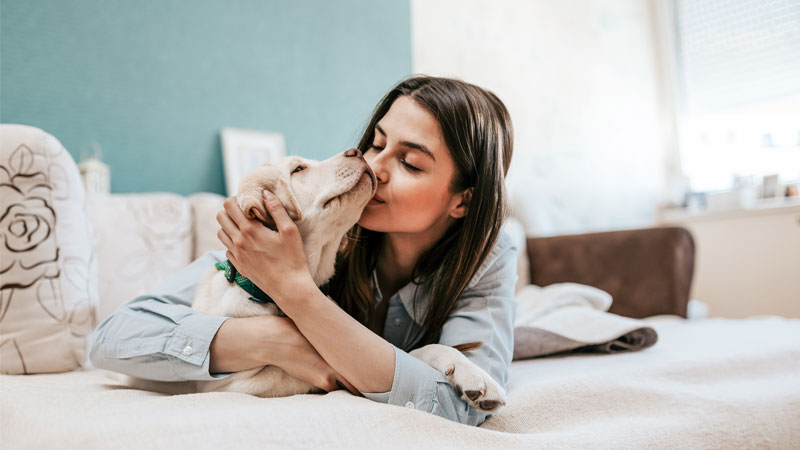Q&A: Diffusing essential oils around dogs

Q: A client recently asked if diffusing essential oils to help her sleep at night might be harmful to her dog. Can you offer any guidance?
A: Using essential oils with dogs and other pets is a controversial topic and there are conflicting views. While the holistic veterinary community embraces their use for animal health and wellbeing there is little research and hard evidence to back up their purported benefits.
When used improperly essential oils can be extremely dangerous for pets and we do not advocate applying them topically or administering them internally without professional guidance.
Diffusing essential oils around dogs is generally considered safe, in low concentrations, if you follow these simple guidelines.
The first thing to remember when diffusing oils is that your dog has an incredibly powerful sense of smell. They have about 300 million olfactory receptors compared to humans who have around 5 million. What may smell subtle to us, may be overwhelming for your pet. It’s also important to consider that your dog may not have the same tastes as you and may not like the particular oils you’re using. Dogs are similar to humans in that they have an amazing innate wisdom, so allow them to use that wisdom and give them the freedom to either inhale the scent if they like it, or to avoid. You can do this by simply leaving the door open in the room you’re in, so your pet can choose to leave. If your dog regularly chooses to leave the room when you diffuse an oil, you should either stop using that oil or avoid diffusing it when your pet is around.
When diffusing, use a water-based diffuser and ensure that it is in a pet-proof location so your pet can’t knock it over and accidentally get it on their skin or ingest it. We’d advise using only 3-4 drops of oil for short-bursts of time. Some electrical diffusers have intermittent settings or an auto-shut off function which are ideal. Always use good quality, 100% pure essential oils and avoid buying cheap oils that may have been adulterated with potentially toxic chemicals. Make sure that the room is well ventilated to prevent a build-up of vapour. When diffusing a new oil, observe your pet’s behaviour to check for any reaction – remembering that animals are individuals, and your pet may be more sensitive to certain oils than others.
If your dog shows any sign of sensitivity, stop diffusing immediately and get them some fresh air. Seek professional advice if you are concerned.
There are various oils listed online as being potentially toxic to dogs. These include (but aren’t limited to): Cassia, Cinnamon, Clove, Citrus (d-limonene), Oregano, Pennyroyal, Peppermint, Pine, Rosemary, Sweet Birch, Tea Tree, Thyme, Wintergreen and Ylang Ylang. The risk is generally reported as being from topical or oral exposure in inappropriate doses, but we would prefer to err on the cautious side and recommend avoiding them in diffusers too.
Signs of toxicity can include skin irritation, hair loss, hypersalivation, coughing or retching. In more severe cases animals may experience behavioural changes, depression, loss of control of over movement, tremors, seizures, breathing difficulties, vomiting or diarrhea.
You should avoid using essential oils with puppies less than 10 weeks old, with pregnant or nursing dogs, or dogs with known breathing difficulties. Seek professional advice prior to using oils if your dog is epileptic, prone to seizures or is taking any medication as certain essential oils may be contraindicated.
Cats are even more sensitive to essential oils and are often allergic, and it is best to completely avoid them around birds.
Sharon Lovett
Marketing Manager
This content was written for and published in the FHT's International Therapist Magazine Spring 2021




